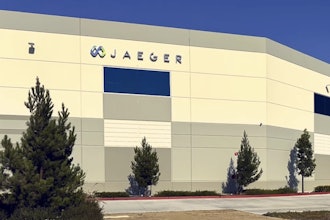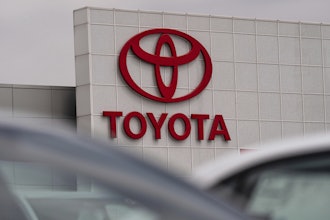When it comes to the optimum manufacture and building of automotive engines and other machined components, many parties have a stake in the results. We’re all concerned with the economic facets such as purchase price, service life, and warranty. Interest in competitive performance racing has never been greater. But other concerns are becoming more prevalent today, including environmental impact, consumption of fuels and lubricants, and safety -- all of which can be directly affected by the selection of tools used for building and servicing engines, brakes, and other wearing components.
Certainly this applies to the surfacing of metal finishes, particularly where honing is concerned. Use of optimum honing tools can affect all of the above, especially when it comes to performance and wear life of engines and vital components such as brakes. And when it comes to the cleaning, surfacing, deburring and edge-blending of critical metal surfaces, one of the most useful and efficient tools available is the ball-style hone.“The ball-style hone has contributed to our engines having a 0.16% warranty claim rate in an industry that averages 6-8%,” says Benjamin Baloga, plant engineering manager for Tomadur Engine Co (Industry, CA). Tomadur remanufactures 19 different Ford gasoline engines back to OE specifications for dealerships throughout North America. The company uses Flex Hone® ball-type hones from Brush Research Manufacturing (BRM) to finish combustion cylinder bores and chamfers as well as the cylinder bores for hydraulic valve lifters.
Microscopic Precision
Used throughout industry where metal machining is involved, the ball-style hone is a specialized abrasive that is recognizable by its usually small, abrasive globules mounted to nylon filaments. Known widely as a tool used for deburring, plateau honing, and deglazing, this is an inexpensive yet sophisticated device. A precision-quality ball-style hone can not only deburr bored metal, but can easily remove even microscopic metal shards and fragments.
“After we are done with the diamond honing of a piston cylinder bore, there are torn, jagged metal particles partially attached to the cylinder wall surface,” explains Baloga. “These are microscopic in size, much smaller than burrs. After we use the ball-style honing tool connected to an air drill, the surface RA Value (roughness average, in microns) goes from 24 to 14. And it only takes 5 strokes off an air drill to do that.”
Multiple Benefits
Baloga explains that the ball-style hone creates a clean, partial-plateau surface finish that allows the piston rings to mate more efficiently to the surface of the cylinder wall. This ensures longer ring life.
“If the rings were installed without the ball honing, they would have to clip off those jagged metal shards, which would wear down the rings a little bit faster,” he says. “If not removed, those metal shards and particles could result in piston scuffing problems and possibly some vertical scratching in the piston wall, which could add to the oil consumption of the engine. So, by us doing this we are able to allow the rings to mate in much more quickly, but also get much lower oil consumption.”
Baloga adds that by eliminating the potential for scuffing of the pistons, finishing the cylinder bores with the Flex Hone could also protect against consequential compression losses resulting from galling cylinder walls with micro scratches, which could in turn cause pistons to gall. The ball-style hone also helps Tomadur achieve the proper crosshatch finish for proper lube oil distribution. “In the end, this simple tool helps to ensure longer engine service life with better compression and lower oil consumption numbers,” he says.Deburring operations cost American companies billions of dollars annually; it is a production headache and frequently the source of bottlenecking in production and refinishing. But in rebuilding an engine or resurfacing brake drums or other components, deglazing is also a vital function that is performed well by the properly selected ball-style hone.
“We’ll use a Flex Hone ball-style hone for deglazing a cylinder,” says Don Bolland, president of Bolland Machine (Beaver Falls, PA). “More frequently, we’ll use it on a diesel engine to clean the counterbores after we pull the old cylinder liner out. That is very important in order for the O-rings to seat properly when you install the new cylinder liners. Or, if we are simply re-ringing an engine, then we’ll use the ball-style hone just to deglaze the cylinders.”
Bolland Machine, which specializes in a wide range of engine components and assemblies, specializes in the rebuilding of gasoline and diesel engines ranging from small engines up to very large Waukesha industrial engines used for pumping natural gas through pipelines. Bolland Machine also restores antique engines, works on racing engines, and has a division called Bol-Tech Motorsports that participates in big-block dirt modified racing.
“We use the BRM Flex Hone ball-style hone in some of our performance engine work,” Bolland says. “We use a CK10 cylinder hone and have used the Flex Hone to obtain a different finish for different performance applications. It is a very practical way to achieve a surface that is optimum for seating new rings.”
Taking the Edge Off
More frequently Bolland Machine uses the ball-style hone on 5-12 in. engines in lower counterbores, where it is important to create a surface with an entry taper that allows an O-ring to smoothly slide into that bore. The edge-blending capability of the ball-style hone removes the sharp rim that could cut the liner O-ring.
For bores 12 in. and larger, BRM has made special ball-style hones for Bolland Machine.
“We’ve actually found a niche where they have custom-made hones of up to 36 in. that we use for special applications such as large vacuum pumps and big compressor cylinders,” Bolland says. “I don’t know of anybody else in the brush hone industry who can do that.”
Tomadur also uses a Flex Hone ball-style hone to deburr the chamfer on the bottom of a piston cylinder bore.
“On many engines there is a sharp edge at bottom of the cylinder bore after machining,” Baloga explains. “You have the potential for piston skirt scuffing because the piston skirt goes out past the bottom of the cylinder walls on some engines. So, we use a Flex Hone ball-style hone to create a smooth radius at the bottom of the cylinder bore. It takes only about 5 seconds to do, and it can prevent a lot of problems.”
In addition to combustion cylinder work, Tomadur also uses a Flex Hone tool to create a blended radius on hydraulic valve lifter bores, thereby avoiding scuffing problems on valve lifters.


















